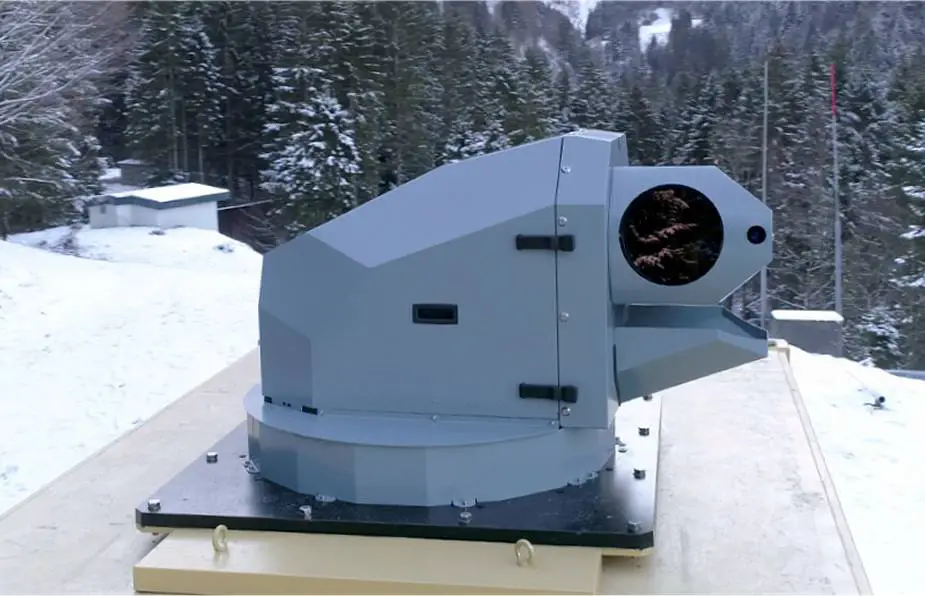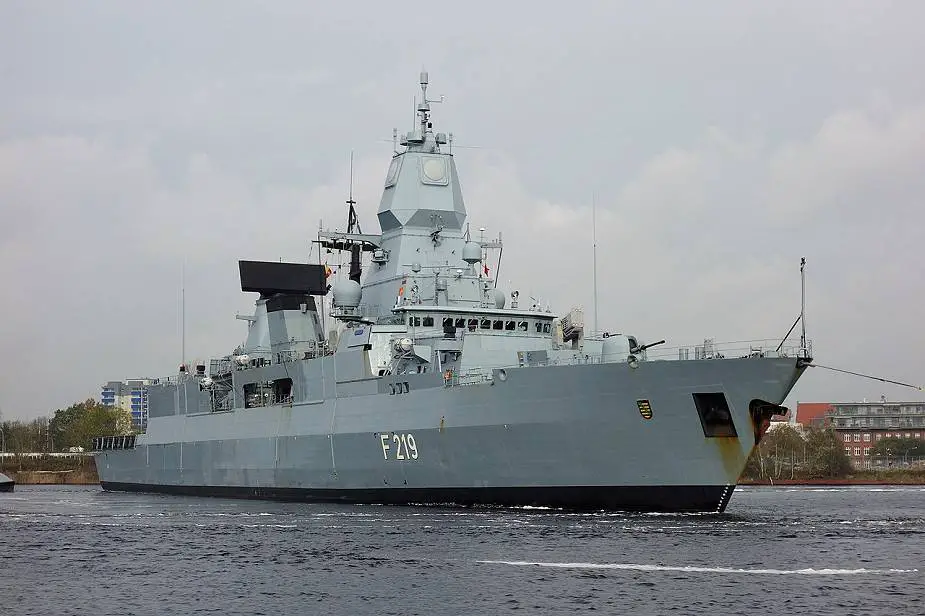Breaking news
Rheinmetall to develop laser weapons demonstrator for frigate Sachsen of German Navy.
According to a press release published on November 26, 2020, the German procurement authorities have awarded Rheinmetall a contract to develop a key future laser weapon system component. At the end of the second quarter of 2020, the Federal Office for Bundeswehr Equipment, Information Technology and In-Service Support, or BAAINBw, contracted with Rheinmetall Waffe Munition GmbH to fabricate a laser source demonstrator. The first project for the laser demonstrator will be a yearlong trial phase onboard the Germany Navy frigate Sachsen.
Follow Navy Recognition on Google News at this link
 Rheinmetall's laser weapon station (Picture source: Rheinmetall)
Rheinmetall's laser weapon station (Picture source: Rheinmetall)
The order is worth a figure in the lower two-digit euro-million range. Intersectional by design, the laser source demonstrator can be employed in various projects to study in greater depth the use of laser technology in military applications.
The laser demonstrator is based on spectral coupling technology, which Rheinmetall has been investigating intensively for years. Its key performance data include scalable output power of up to 20 kW with very good beam quality. In essence, the demonstrator consists of twelve nearly identical 2kW fiber laser modules with close to diffraction-limited beam quality. A beam combiner – a subassembly that turns multiple beams into a single beam by means of dielectric grid technology – couples the twelve fiber laser beams to form a single laser beam with excellent beam quality.
Spectral coupling technology offers a multitude of advantages compared with other coupling technologies, e.g. geometric coupling: it is less complex, highly modular and features growth potential in the 100kW performance class; moreover, as a passive system, it is able to operate with extremely low control effort.
In 2015, during trials conducted in the Baltic, Rheinmetall successfully engaged targets on land with a functional prototype of a shipboard laser weapon system for the first time in Europe. Then, in 2018, BAAINBw and Rheinmetall successfully tested a laboratory-based 20kW laser source. The planned trials, to be conducted in military environments under authentic operating conditions, are the next step on the path from laboratory to practical application, all in the space of just three years. This is a major step – vital and demanding – on the road to introducing future laser weapon systems.

German Navy frigate Sachsen at the deperming range in Wilhelmshaven (Wikimedia)
The F124 Sachsen class is Germany's latest class of highly advanced air-defense frigates. The design of the Sachsen-class frigate is based on that of the F123 Brandenburg class but with enhanced stealth features designed to deceive an opponent's radar and acoustic sensors.
The ships of the Sachsen class are 132.15 meters (433.6 ft) long at the waterline and 143 m (469 ft) long overall. They have a beam of 17.44 m (57.2 ft) and a draft of 5 m (16 ft), though the draft increases to 7 m (23 ft) at the sonar array in the bulbous bow. They displace 5,690 long tons (5,780 t) at full load. Steering is controlled by a single roll-stabilized rudder; the ships have a turning radius of 570 m (1,870 ft). The frigates have a crew of 38 officers, 64 petty officers, and 140 enlisted sailors.
The primary anti-air weapons are the 32-cell Mk 41 Mod 10 vertical launching system, equipped with twenty-four SM-2 Block IIIA missiles and thirty-two Evolved Sea Sparrow missiles. Point-defense against cruise missiles is provided by a pair of 21-round Rolling Airframe Missile launchers. The ships are also equipped with two four-cell RGM-84 Harpoon anti-ship missile launchers. In 2013, the German Navy considered modifying the ships' long-range search radar to allow the SM-2 missiles to be used in an anti-ballistic missile capacity.
For defense against submarines, the frigates carry two triple-launchers for the 324 mm (12.8 in) MU90 Impact torpedoes. The ships also carry a variety of guns, including one dual-purpose 62-caliber 76-millimeter (3 in) gun manufactured by OTO Melara. They are also armed with two Rheinmetall 27 mm (1.1 in) MLG 27 remote-controlled autocannons in single mounts.


























